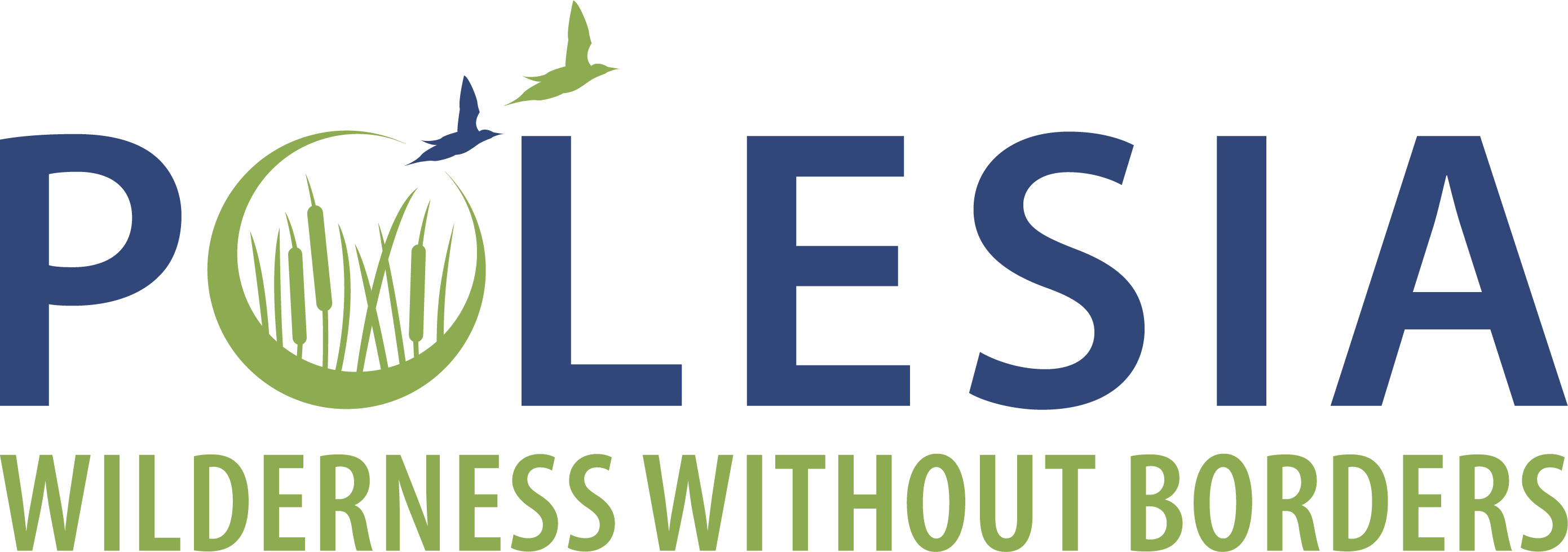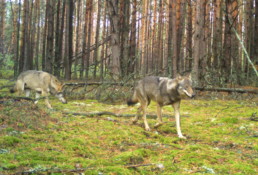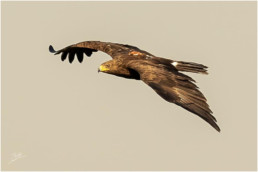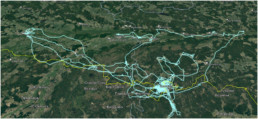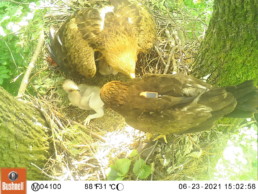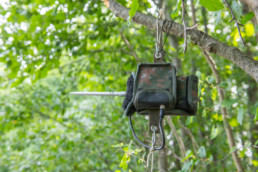Restoration feasible: five drained wetlands in Ukrainian Polesia are to be rewetted
Among the highlights of our project activities this year, the preparatory work for wetland restoration in Ukraine stands out. Jointly with our partners, we have selected five sites in the Ukrainian part of Polesia for further restoration. All of them are wetlands disturbed by drainage, and the planned actions will involve changing the hydrological regimes of these sites.
Though Ukraine is currently at war, environmental issues are high on the agenda. “Healthy” wetlands of Ukrainian Polesia are vital for the whole of Ukraine. Their water resources feed the country’s major rivers, such as the Dnieper providing drinking water for millions of people. And the results of intensive drainage of this area in the mid-20th century are disastrous. While experts are sounding the alarm about the loss of biodiversity, rising greenhouse gas emissions and temperatures, local people are witnessing the degradation and often abandonment of land, increasing frequency of droughts, lack of clean drinking water and critical air pollution from particles emitted during wildfires. This is why more and more people are speaking out in favor of wetland restoration.
Seizing the moment, our partners at the Michael Succow Foundation carried out a feasibility assessment of potential restoration sites in the Ukrainian part of Polesia. They considered a wide range of aspects, including the spatial, ecological and hydrological characteristics of the sites. Thus, attention was paid to sites’ location and area, peatland type, presence or absence of drainage systems and their current state and size, maximum land surface temperatures and frequency of landscape fires, the legal status of the areas and stakeholder analysis, expected complexity and costs of restoration. As a result, the experts identified five sites (totalling 20,000 ha) with the best prospects for successful restoration and agreed further action with stakeholders.
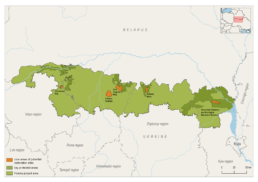
All of the selected sites have drainage canal systems on their territory. However, the sites differ significantly in terms of their degree of disturbance, spatial and ecological characteristics and drainage system features. Therefore, each site requires a special approach and an individual set of measures to improve its condition.
The Cheremske Bog is located in the Volyn and Rivne regions. Although somewhat disturbed by an attempt to drain it in the early 20th century, it is now generally in good functional condition and only needs some support. Our aim is to prevent any further drainage of the area to make it more resilient to changing climate conditions.
The Somyne Swamps and Syra Pogonia Bog are located close to each other in the Rivne Oblast. The Somyne Swamps have a very special page in its history: in the 1920-1930s, when the state border between Poland and the Soviet Union crossed the present-day territories of Ukraine and Belarus, a very peculiar defense line was built on the Polish side. Apart from fortifications and bunkers, it included Polesian rivers and mires as natural barriers. The Somyne Swamps were a part of this Polesian defense line. Nowadays it is in need of restoration, having been disturbed by drainage and amber mining.
The Syra Pogonia Bog is adjacent to the Almany Mires peatland compex located northwards, across the Ukrainian-Belarusian border. Together they form the largest complex of raised, transitional mires and fens in Europe. Syra Pogonia has the characteristics of northern (taiga) wetlands, which are unique for Ukraine and Central Europe. The site is rich in biodiversity and serves as an important breeding site for wetland birds, including the globally threatened Greater Spotted Eagle (Clanga clanga). The peatland has been severely affected by drainage and suffers from frequent wildfires.
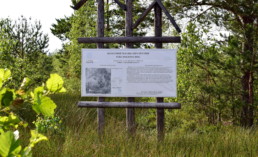
Not only the construction of drainage canals has influenced the hydrological regime of Polesia in the past. Many rivers have also been altered. As a result of the deepening and channelling of the Zholobnytsia River and the construction of a network of drainage canals, the river’s floodplain was reclaimed for agriculture in the mid-20th century. Today, the land is no longer suitable for agriculture and the drainage system has been abandoned. Preliminary analysis showed that in order to ensure successful restoration of the hydrological regime in this area, it might be necessary not only to block up the canals, but also to reverse the river bed alteration.
Another distinctive site selected for restoration in Polesia is the Uzh river floodplain, located in the Kyiv region, in the southern part of the Chornobyl Radiation-Ecological Biosphere Reserve. Before and after the nuclear accident, the area of what is now the reserve was heavily drained to prevent the spread of contamination. Now the area suffers from devastating fires: in 2020, the flames affected almost 5% of the area and were one step away from the “red zone” where radioactive waste is stored. Those fires caused extreme air pollution in Kyiv. Restoring the wetlands in the areas surrounding the Chornobyl nuclear power plant is therefore of paramount importance. However, following the start of the full Russian invasion, a significant part of these areas are still mined. This is the main obstacle to large-scale wetland restoration in the Chornobyl zone. Nevertheless, it has been decided to start the work in a safe place, so that it can be continued as soon as it is safe to do so.
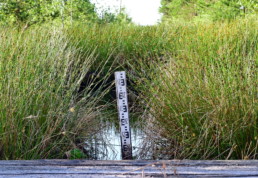
Importantly, the selected territories are located in four administrative regions of Ukraine comprising the territories of Polesia – Volyn, Rivne, Zhytomyr and Kyiv. Thus, after restoration of the proposed sites, each region will have a team of experts with practical experience in restoration: site selection, stakeholder involvement, administrative procedures, preparation, monitoring, construction works and evaluation of the results achieved. They will be able to scale up wetland restoration activities in their regions, each of which has quite large areas in need of rewetting.
Olga Denyshchyk, scientific project coordinator at the Michael Succow Foundation:
“We plan to carry out the restoration work as openly as possible to show how rewetting works and what benefits it brings. Maybe we will develop an algorithm for such works, because many environmental organisations are interested in this topic, but unfortunately there is little experience in Ukraine. We want to set a positive example for professionals and residents of Ukraine – this will allow restoration work to be carried out on a much larger scale in the future.”

Anthropogenic factors limit suitable habitat for wolves in Polesia
16. November 2023
0 Comments7 Minutes
Through a camera trap: the secret life of rare eagles at arm’s reach
13. September 2023
0 Comments10 Minutes
The project “Polesia – Wilderness Without Borders” is part of the Endangered Landscapes & Seascapes Programme and is funded by Arcadia. The project is coordinated by Frankfurt Zoological Society (FZS).
